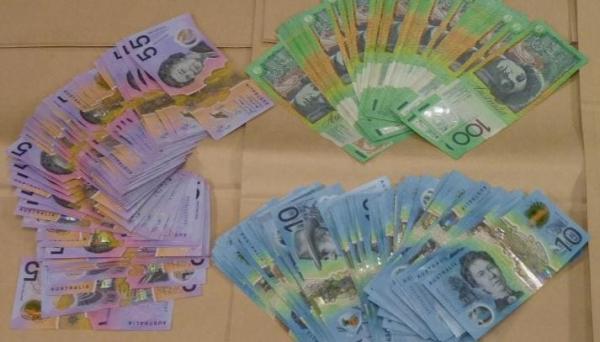The virus that causes COVID-19 can survive 28 days on banknotes, mobile phone screens and stainless steel, Geelong-based researchers have found.
Although Australian cash appears to be less COVID-friendly than paper banknotes used in countries such as the US, according to the internationally-significant research.
CSIRO scientists at Geelong’s Australian Centre for Disease Preparedness found the virus, SARS-CoV-2, survived longer and in higher quantities on paper banknotes than polymer.
The difference in survivability on paper (21 days) and plastic (seven days) banknotes was highest at 30 degrees Celsius, and much lower at 20 and 40 degrees.
The centre’s deputy director Debbie Eagles said the coronavirus survived longer at lower temperatures and was “extremely robust at 20 degrees Celsius”.
At 20 degrees the virus could survive up to 28 days on glass and plastic banknotes, Dr Eagles said.
The results reinforced the need for practices such as regular handwashing and cleaning surfaces, she said.
“Similar experiments for Influenza A have found that it survived on surfaces for 17 days, which highlights just how resilient SARS-CoV-2 is.”
The research also found SARS-CoV-2 survived longer on smooth surfaces including glass, stainless steel and vinyl, compared to porous complex surfaces such as cotton, Dr Eagles said.
The scientists applied droplets of SARS-CoV-2 in artificial mucous to surfaces at concentrations similar to those in samples from infected patients.
They conducted the study in the dark, as previous research has demonstrated UV light from direct sunlight can rapidly inactivate the virus.
Establishing the survivability of the virus on various surfaces was critical for developing risk-mitigation strategies in high-contact areas, Dr Eagles said.
Scientists had yet to determine the precise role of surface transmission in the pandemic, and the contact and amount of virus required for infection, she said.
Centre director Trevor Drew said many viruses remained viable on surfaces outside their host, and that their survivability and infectiousness depended on various factors.
“Proteins and fats in body fluids can also significantly increase virus survival times,” Professor Drew said.
“The research may also help to explain the apparent persistence and spread of SARS-CoV-2 in cool environments with high lipid or protein contamination, such as meat processing facilities, and how we might better address that risk.”







